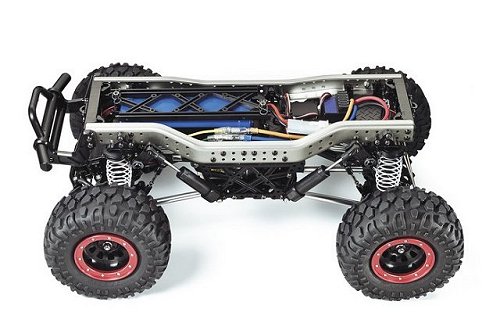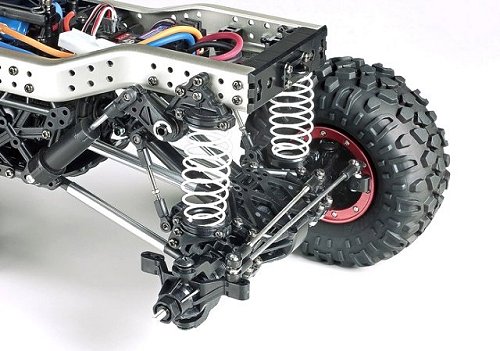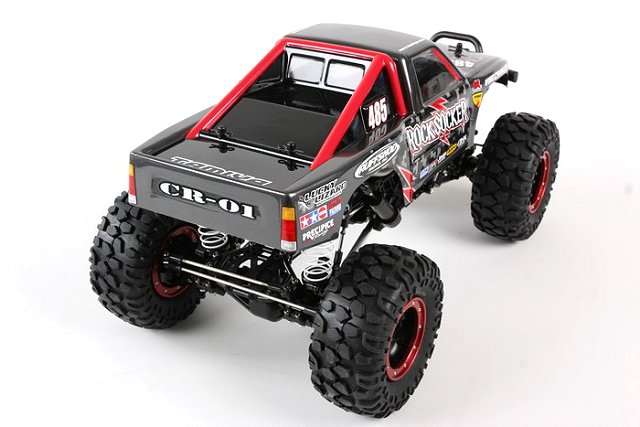

|
|
|


|
Tamiya Rock Socker Truck - 58592 (Radio Controlled Model Review)1/10 Scale Electric Rock Crawler - CR-01 Chassis:
Released by Tamiya on May 1, 2014, based on the CR-01, Four Wheel Drive Rock Crawler Chassis, the Rock Socker Truck, follows the success of the four previous models to use this chassis.
▼ Scroll Down for More Images ▼
Rating: 4.5
|








|
|
|

|
|
Tamiya Rock Socker Truck #58592 CR-01 - Chassis
 |
|
Tamiya Rock Socker Truck #58592 CR-01
 |
Buying a Used Tamiya Rock Crawler (and What to look for)
Make a General Visual Inspection
Check the Body-Shell
If the body shell of your Rock Crawler is broken, ripped or damaged in any way, this can be easily repaired with rubber solution glue. Also, for added protection and if available for your model, fit an under guard to stop dirt and gravel entering the chassis. Drive Shafts and Turnbuckles
Examine the Drive System
The gearbox of your used Rock Crawler should be opened up to check for damaged gears and wear. If there is excessive backlash in the gearing, these should be replaced. A thin coat of grease on the gears is enough to allow smooth operation and reduce further wear. Pinions and Spur Gears
Steering Servo and Servo-Saver
Don't Forget those Bearings
|









|






|
|
|

|
Hints, Tips and Information Ball Differentials
Ball differentials were developed in the late 1980s to replace the high friction Gear differentials. Mainly used on Touring Cars, Pan Cars and Formula One Cars, Ball Differentials are designed to be totally frictionless and smooth in action to provide effortless drive to the wheels on cornering, where the inside wheels must rotate slower than the outside wheels for controlled stability.
|
|
Hints, Tips and Information Electric Motors for RC ModelsWinds and Turns
Q/ What does 15x2 or 17x3 mean? |
|
RC Models:
|
Radio & Motors: |
Other
Accessories: |